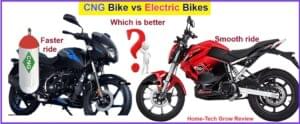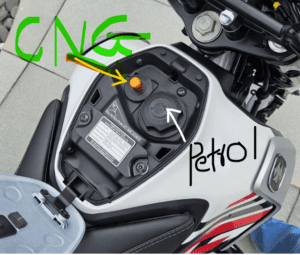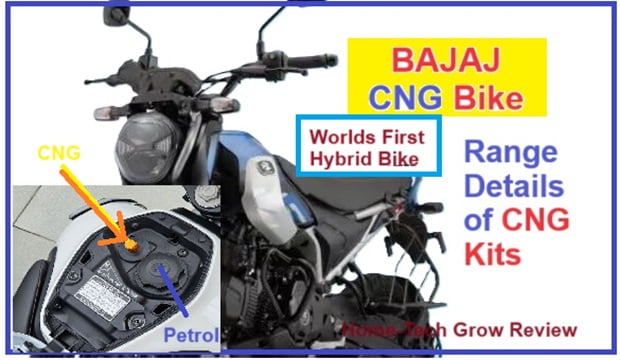- When comparing CNG bikes to electric scooters, each has its advantages and drawbacks. Here are the key benefits of CNG bikes over electric scooters:
Benefits of CNG or Petrol Bikes
- Longer Range:
- Petrol to CNG bikes typically have a longer range per fill-up compared to the range of electric scooters on a single charge.
- This makes CNG bikes more suitable for long-distance travel.
- Refueling Time:
- Refueling a CNG or pterol bike takes only a few minutes, similar to refueling a petrol bike.
- In contrast, charging an electric scooter can take several hours unless using a fast charger.
- Wider Availability of Fuel Stations:
- In many regions, CNG or petro; refueling stations are more prevalent and established compared to electric vehicle (EV) charging infrastructure. This can make it more convenient to refuel a CNG bike.
- Performance Consistency:
- CNG bikes generally offer consistent performance without significant power drop, even when the fuel level is low. Electric scooters can experience reduced performance as battery charge decreases.
- Lower Initial Cost:
- CNG bikes often have a lower initial purchase cost compared to electric scooters, making them more affordable for some consumers.
- Less Dependence on Electricity:
- CNG bikes do not rely on electricity, making them a good option in areas with unreliable power supply or where electricity is expensive.
- Proven Technology:
- CNG technology is well-established and has been used for years in various types of vehicles, providing a sense of reliability and familiarity to consumers.
Refer: CNG Bike or Electric Bike Which One is better

Range of CNG Bikes
- The mileage of CNG bikes can vary depending on the specific model and usage conditions.
- Generally, CNG (Compressed Natural Gas) bikes offer a significant advantage in terms of fuel efficiency compared to traditional petrol bikes.
- Here are some typical figures for CNG bike mileage:
-
- Average Mileage:
- CNG bikes usually provide a mileage of around 100-350 kilometers per kilogram of CNG.
- This is higher than the mileage offered by most petrol bikes.
- Fuel Cost Efficiency:
- Since CNG is cheaper than petrol, the cost per kilometer for running a CNG bike is lower.
- This makes CNG bikes more economical for daily commuting.
- Environmental Impact: CNG bikes produce lower emissions compared to petrol bikes, making them a more environmentally friendly option.
- Average Mileage:
- Specific models and brands may have different mileage figures, and the actual mileage can also depend on factors such as riding habits, maintenance, and road conditions.
CNG Capacity and Range of Bajaj Freedom Bike
- The Bajaj Freedom gets 2 litre of CNG cylinder and 2 L of a fuel tank
- it offers an overall efficiency of 330 km on a single top-up
- It has been informed that the latest offering provides an impressive traveling cost of Rs 1 per km.
- As far as the power is concerned
- it is capable of providing a maximum power of 9.5 bhp and robust a peak torque of 9.7 Nm.
Cost of Bajaj Freedom Bike
- The bike has a starting price of Rs 95,000 and goes up to Rs 1.10 lakh (ex-showroom)
- It will be available in 3 variants


